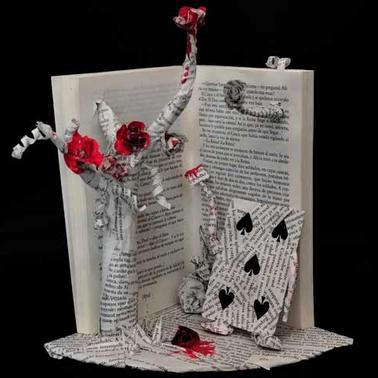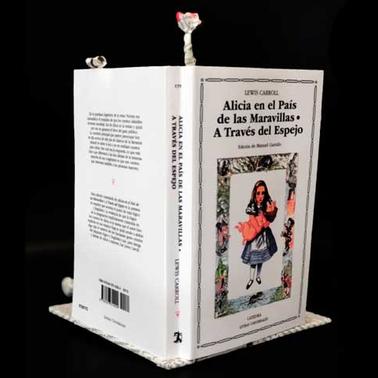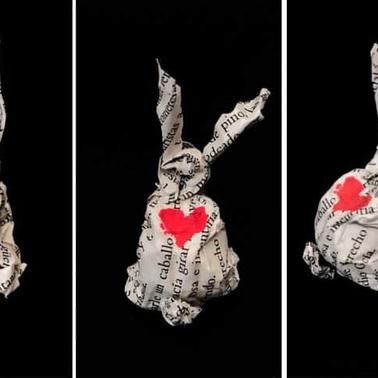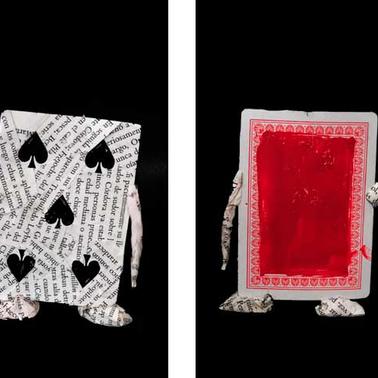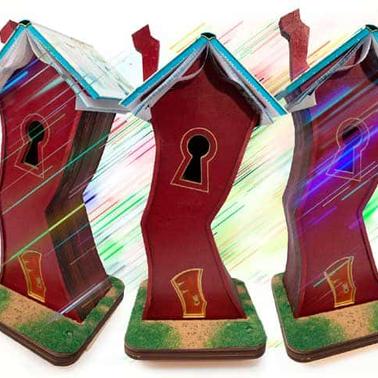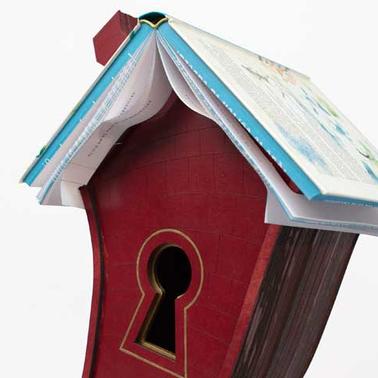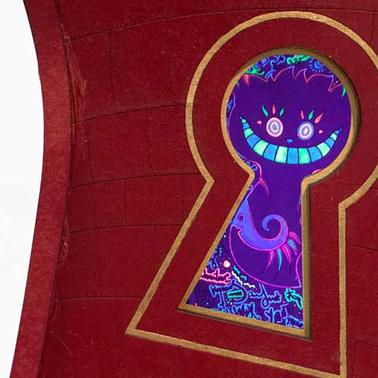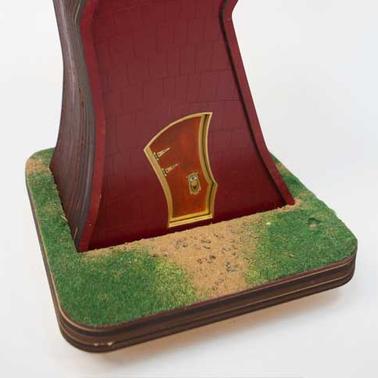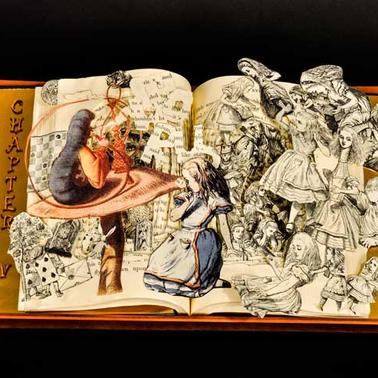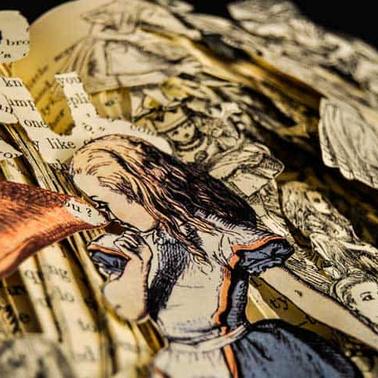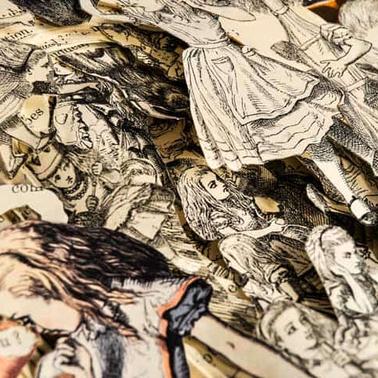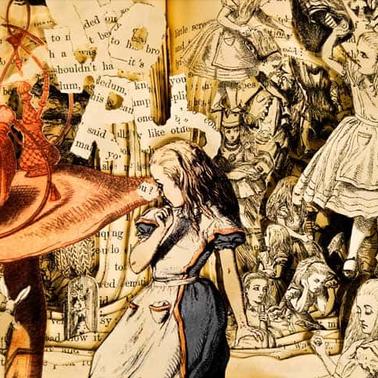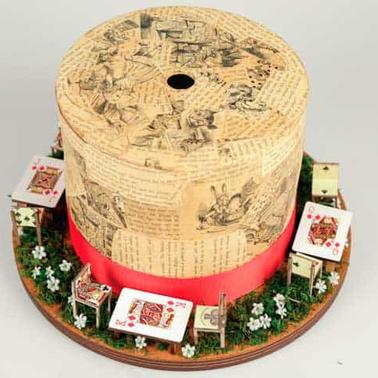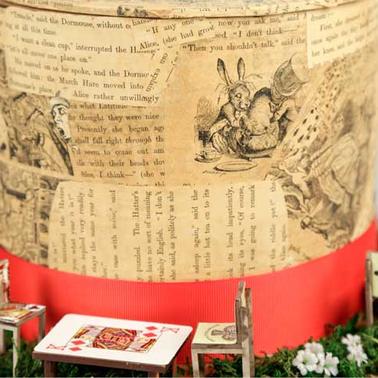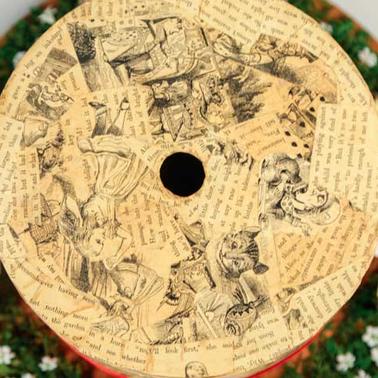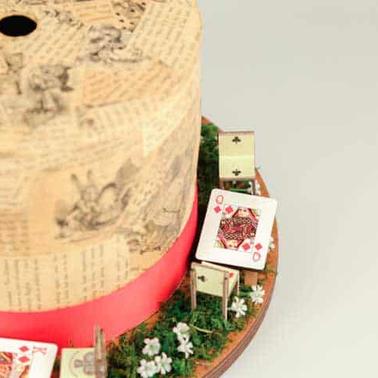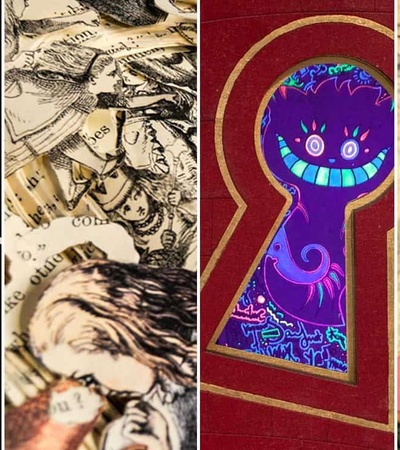
The Alice in Wonderland Art Book was created through a practical process. Each student chose a specific chapter of the book, ripped the chapter out, and with those pages, created a unique object that visually represented the essence of the chosen content. Students developed their work over two and a half weeks, conceptualizing the chapter that had inspired them.
WHY ALICE?
Alice in Wonderland is an incredible publication with unlimited ways to represent ideas visually.
Students pondered questions like how to represent the tea party scene, or what the Mad Hatter is all about. As the course’s final project, students had to use the different techniques they had learned during the last three months of the course and apply them to the art book.
Some examples of our students’ representations can be found below:
BIANCA BRACCHETTI
BIANCA BRACCHETTI
I chose chapter eight, which is called, ‘The Queen's Croquet.’ Alice is described entering the queen’s garden, seeing a large rosebush and playing-card gardeners discussing the idea of painting the white roses red. The Queen of Hearts had expressly asked for red roses, but having made a mistake, they risked their heads being cut off. The roses in my project are not completely colored red to show they have been painted, and also because the playing-cards didn’t finish before the Queen arrived. In chapter eight, there is also the famous symbolic figure of the White Rabbit, a fundamental element throughout the book. But the White Rabbit, in this chapter, is not late and is not carrying the clock, but rather is under the command of the Queen. In fact the White Rabbit is marked with a red heart on his back, in honor of the Queen of Hearts. My art book, through the figure of the playing-card coloring the roses red, represents the essence of my chapter.
MIKI AMBROSSI LARIOS
MIKI AMBROSSI LARIOS
For the final project, I chose the chapter “Pig & Pepper.” I made a big house in line with the aesthetics of Alice in Wonderland. The house is crooked and has an almost idyllic fairytale look. As you approach the house you can start to see through the window, built in the shape of a keyhole. Through the keyhole you can see a neon-colored Cheshire Cat, the central image of the chapter, with several doodles around it. For me, the house is an extended metaphor, the façade is clean and organized, but when you look through the keyhole you get a glimpse of craziness. It’s an interior filled with thousands of neon colors that represent the insanity of the Cheshire Cat. These neon colors create a higher contrast with exterior colors. There is a sense of the uncanny, of a chaotic and crazy world. The Cheshire Cat ends up becoming not only a symbolic image of the chapter, but also of the book itself, a “universal” image of Lewis Carroll’s novel.
NICOLE BELTRAN
NICOLE BELTRAN
Chapter five grabbed my attention the most. This chapter is about Alice’s interaction with the caterpillar named Absolem, who is smoking hookah and resting on a tall mushroom plant. The creature looks at Alice and asks sleepily, “Who are you?” to which Alice replies she doesn’t really know anymore, after all the recent changes she’s been through. She tells him how confusing it can be to change size so many times in one day. The caterpillar acts like a kind of wise man or teacher, but the advice he gives her makes Alice’s thoughts even more unstable. Because of this, I decided to convey the concept of Alice’s identity. Multiple illustrations of Alice, represented differently in each chapter, represent the inner workings of Alice’s mind as she analyzed and deconstructed the caterpillar’s question.
YASMINA TAHER
YASMINA TAHER
For this project, I decided to pick three chapters and combine them into one object. I picked chapter one, where Alice falls down the rabbit hole; the mad tea party, found in chapter seven; and chapter eight, which is about the Queen’s croquet-ground. These chapters remind me of the movie the most. I had to think of an object that would allow me to combine these three chapters in an interesting and creative way. I decided that the most relevant object was the hat. The upper part of the hat represented the hole Alice falls into (chapter one), and the base represented chapters seven and eight working as the “garden” where the tea party happens. In order to combine the mad tea party and the chapter about the Queen of Hearts, I decided to create tables and chairs representing the tea party out of playing cards, making a reference to the Queen of Hearts and her army.
